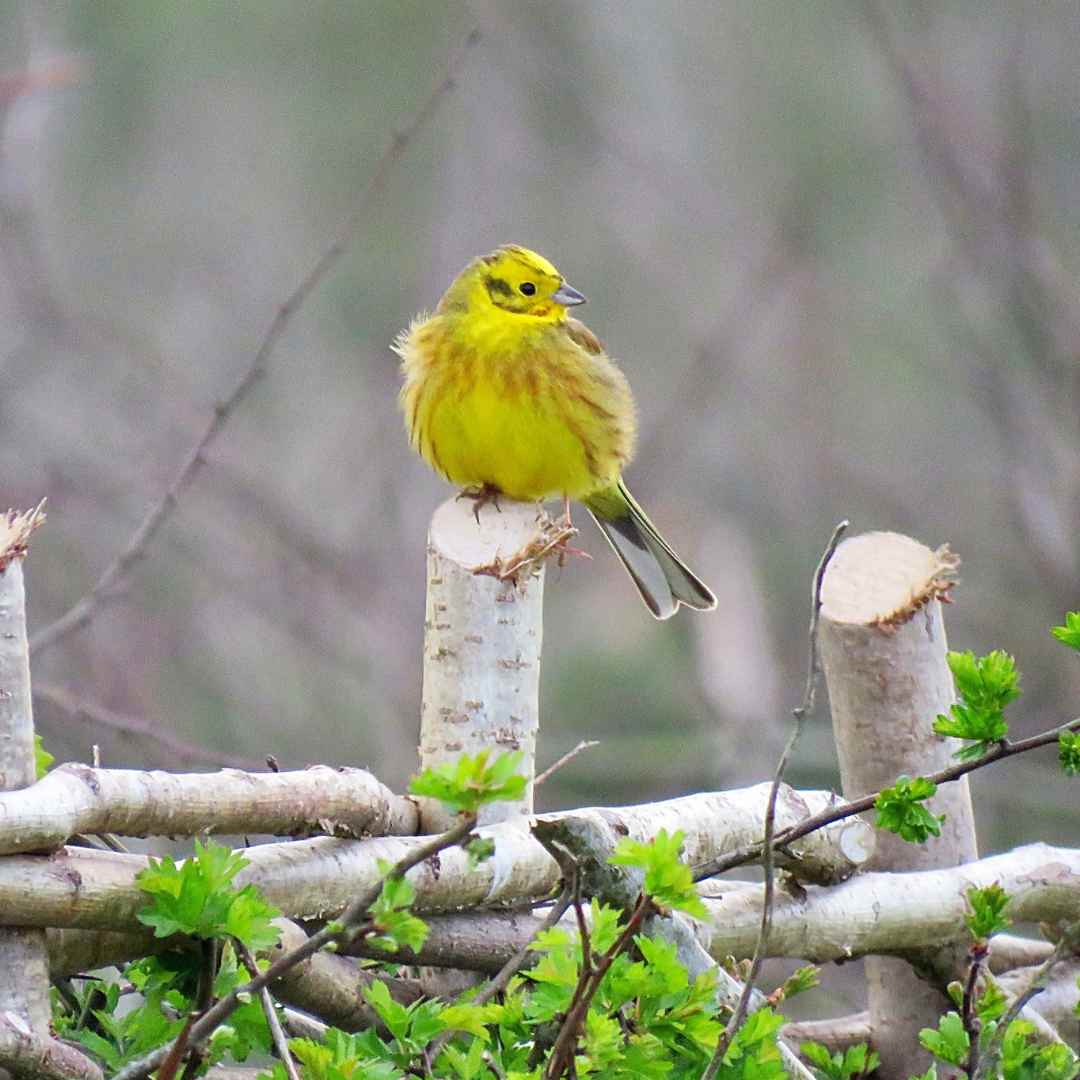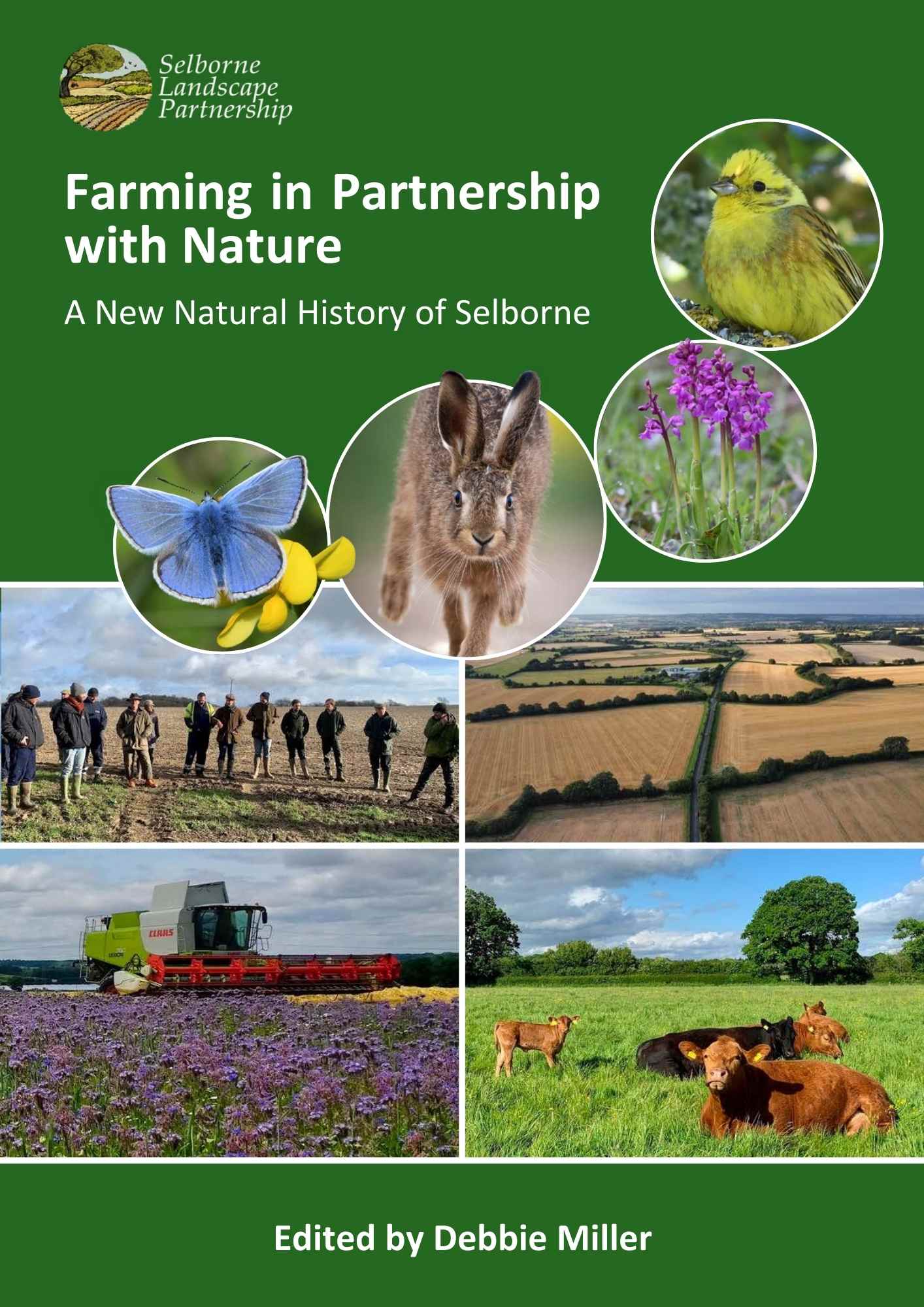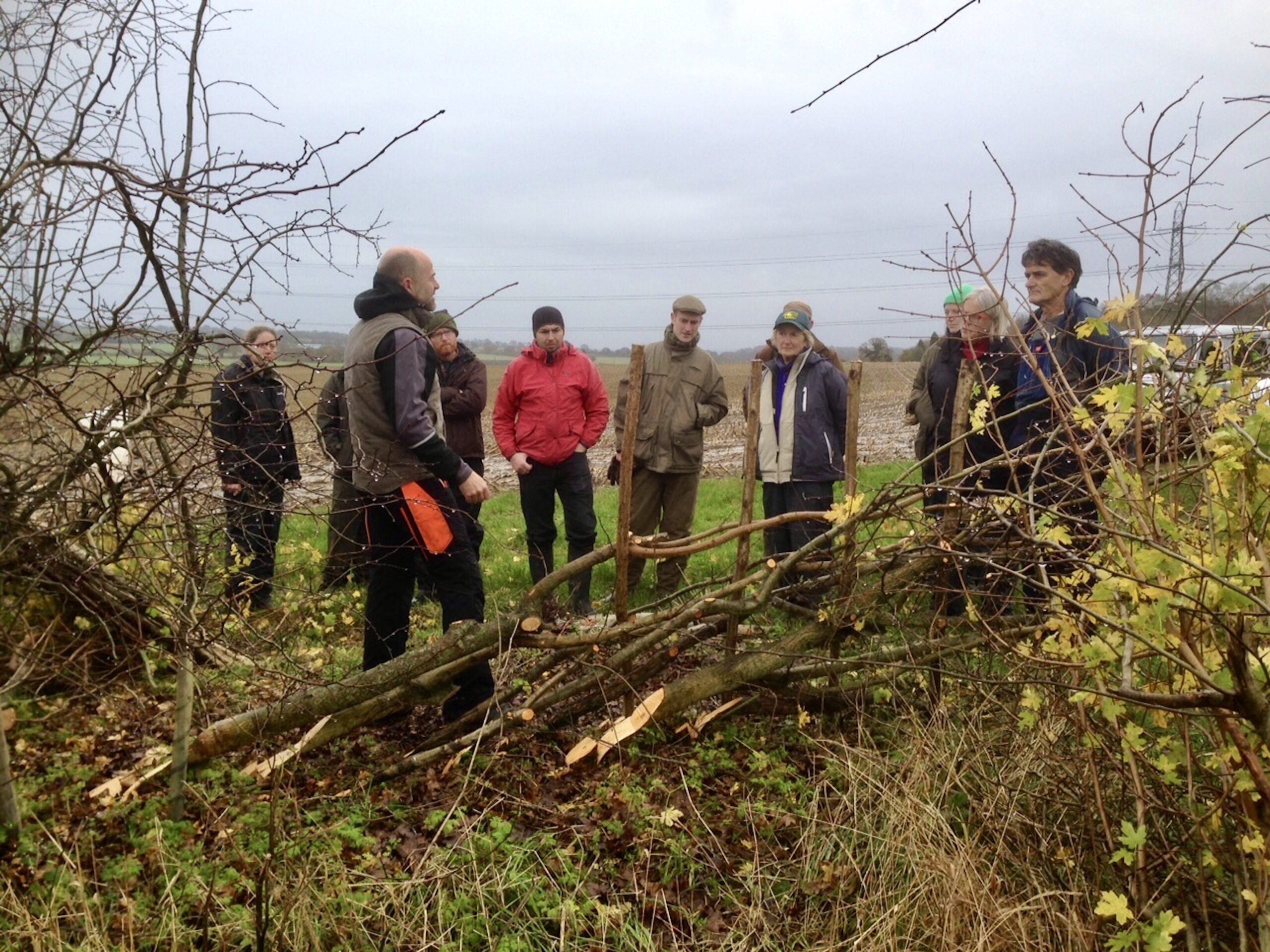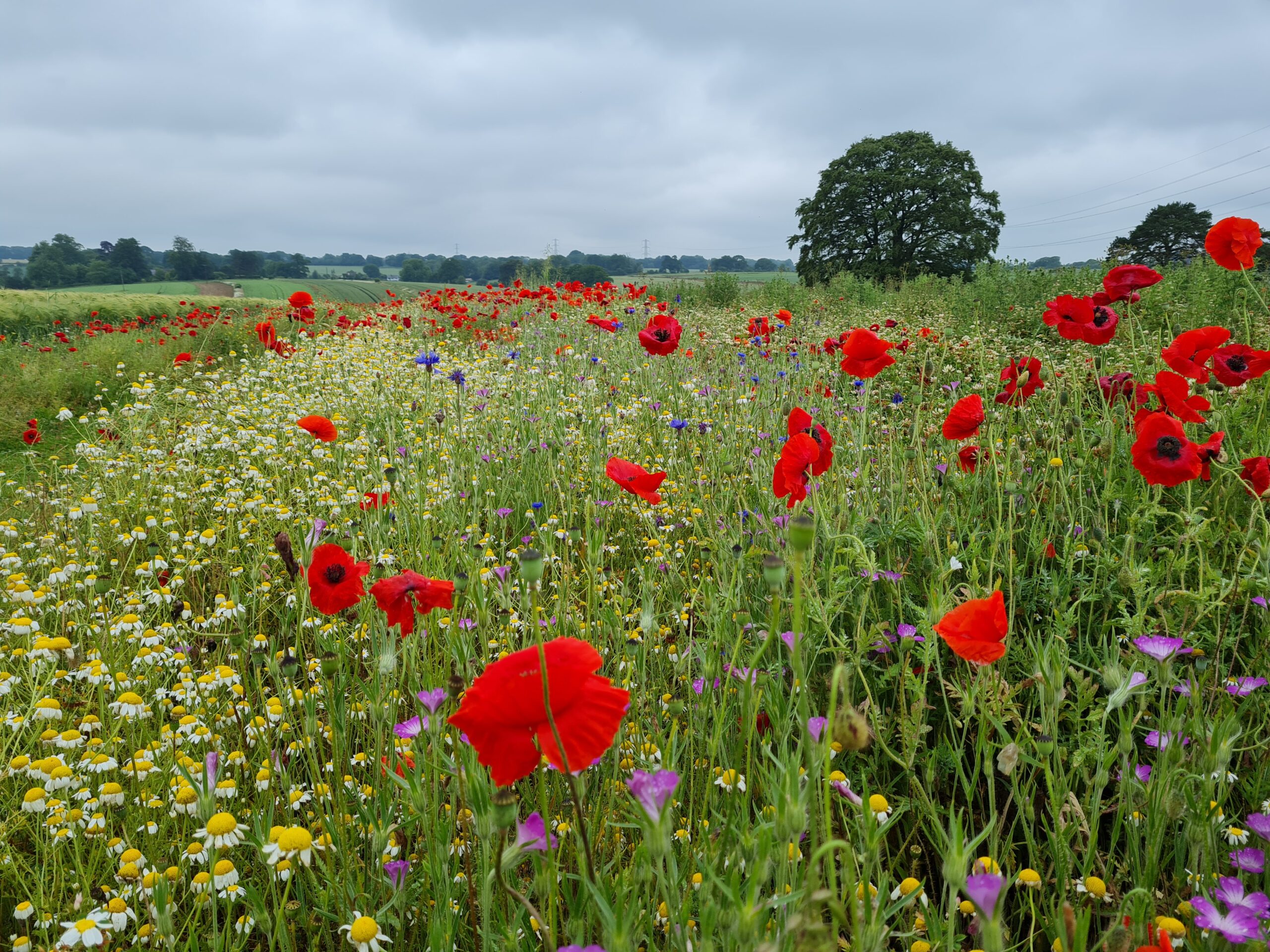
Photo credit: Amelia GWCT student
‘Dear Sir,—I heard many birds of several species sing last year after Midsummer, enough to prove that the summer solstice is not the period that puts a stop to the music of the woods. The yellowhammer no doubt persists with more steadiness than any other’ – Letter V, April 12th 1770, from Gilbert White’s ‘The Natural History of Selborne’
Compared to White’s time of roaming the South Downs, the joy of listening to the yellowhammer sing has been jeopardised in the current age, as this bright yellow bird has found fewer and fewer suitable areas of farmland habitat to feed and breed. Since 1967 the UK population of yellowhammers has reduced by 61% (RSPB). The yellowhammer is sadly not the only species which previously abundant in White’s time has since declined. From the 2019 State of Nature Report the indicator of abundance for 214 of the UK’s top priority species ‘declined by a statistically significant 60%’ since 1970. UK biodiversity is in trouble.
But help is on the way. Since 2017, a cluster of farmers from White’s very own parish of Selborne, alongside nature-loving volunteers, have been working together as part of the Selborne Landscape Partnership (SLP), to carry out surveys of the wildlife across the parish and surrounding area. The data collected has subsequently been analysed to understand species presence and abundance, which in turn has helped to inform conservation efforts – including the restoration of habitats for target species.
The five-year survey and conservation work already carried out by the SLP have been presented in a report, which was launched on the 20th March 2023, here in Gilbert White’s Field Studies Centre. The report is titled ‘Farming in Partnership with Nature – A New Natural History of Selborne’. The report was named to capture how it is the most comprehensive study of wildlife in the Selborne area since Gilbert White wrote ‘The Natural History of Selborne’ back in 1789 – almost 250 years ago.

Headline figures from the report:
Records:
- Around 10,000 species records were collected from over the 5,600 hectares covered by the SLP area.
Birds:
- 114 bird species have been recorded and still increasing. This is just shy of the 120 bird species recorded by Gilbert White.
- Of those 114 species, 88 of them are the same as those recorded by White including the iconic Swallow.
- As a result of introductions or range expansions new species have entered the area including the red-legged partridge and little owl.
- Species which no longer breed in the SLP area include the stone-curlew and the wood warbler (the wood warbler is a species which White was famous for identifying from the chiffchaff and willow warbler by listening to their different songs).
- Some of the birds most likely to be encountered throughout the year in the SLP include the skylark, green woodpecker and the goldcrest.
Pollinators:
- In 2020 alone 29 species of butterfly were observed.
- Of 106 hedgerows examined 33% were found to contain eggs of the brown hairstreak butterfly (a total of 175 eggs). The brown hairstreak butterfly is one of Britain’s rarest butterfly species.
- Gilbert White’s House & Gardens is part of the SLP, and at this site alone 350 species of moths have been identified as present, (read our blog from 2022 by Chris Piper to discover some of these incredible species).
- For the pollinator survey a total of 350 insects were recorded over 19 counts. This included insects such as bees, wasps, beetles, flies, butterflies and moths.
- Popular flower types among the pollinating insects included white clover, buttercups, bramble and mayweed. However it must be noted that popularity will be affected by the flower types available, as some wildflowers were not available in all locations of the SLP for pollinating insects.
Mammals:
- Surveying in the SLP in 2014 and 2015 resulted in over 470 harvest mouse nests being recorded. The harvest mouse is especially significant to the area as it is a species that Gilbert White was first to identify.
- In a small sample covering just 25% of the SLP area 8 brown hares were recorded, which marked a positive result.

Photo credit: Oly Berriman
Following the surveys, Selborne Landscape Partnership has worked together to improve the scale and variety of wildlife habitats for target species. By focusing on habitat management for target species it holds benefits for a wide diversity of species, as many species have shared habitat requirements within the ecosystem. The SLP focused on delivering the ‘Big Three’ habitat requirements, which consist of providing:
- Nesting sites
- Pollen and nectar sources
- Winter food, hibernation and shelter.
Over 15 miles of hedgerow have been successfully restored by the SLP. Hedgerows are valuable habitats for farmland wildlife. For instance, hedgerows provide nesting opportunities for birds, shelter for brown hares, hibernation sites for frogs and toads, and feeding opportunities for pollinators. An important complementary habitat alongside the hedgerow is the presence of unmown, tussocky grass with wildflowers. The SLP has restored 93 miles of tussocky field edges. This provides excellent nesting sites for the yellowhammer and grey partridge. These two target species, alongside the harvest mouse, require foraging habitats that have a plentiful abundance of insects, especially when they are feeding their young. The promotion of wildflowers amongst the tussocky grass is important for attracting the insects. SLP members took part in the South Downs National Park Beelines Project, where flowering shrubs were planted, existing grasslands were enhanced with wildflowers and new wildflower headlands were created.
A further benefit of hedgerows and tussocky field margins is that they act as wildlife corridors, allowing species to move between different habitats. This promotes connectivity between disparate populations. This is particularly important for small mammals, so that they can traverse the farmland habitats. The presence of small mammals in turn makes these habitats important for their predators, such as the barn owl.
The SLP then turned its attention to restoring and creating ponds. Ponds are an important habitat for a variety of species, but particularly amphibians. This is because ponds tend to dry up once every couple of years and therefore fish are less likely to frequent them, and without fish the amphibians are able to thrive, because the levels of predation upon their eggs and tadpoles decreases. Restoring ponds with a diverse variety of plants that constitute a variety of pond zones, such as swamp plants (e.g. yellow iris), marsh plants (e.g. rushes) and plants rooted in the pond’s base (e.g water-crowfoot), is important to promote a diverse array of pond life including: crustaceans, damselfies, dragonflies, annelids, molluscs, water beetles and many more! The SLP has begun restoration on 100 ponds in the area.

SLP Hedge-laying Training
As a result of all the hard work and dedication which went into completing the five-year survey and improvement of wildlife habitats, the SLP’s report drew up recommendations for how the Partnership can continue to make progress into the future. These recommendations include:
- Reviewing and expanding the group of target species that the partnership puts its efforts into conserving.
- Continuing to deliver the ‘Big Three’ for prime wildlife habitat creation.
- Evenly distributing the provision of flower-rich pollinator habitats across the SLP.
- Restoring the network of ponds across the SLP.
- Developing further projects to reinstate and improve the quality of hedgerows across the SLP.
- Spreading the word about the importance of integrating nature conservation and farming to achieve a sustainable future.
The overall goal of the SLP as they embark on the next five years of their work, is to ensure that wildlife doesn’t just survive but can actually thrive at the landscape scale of the Partnership. The size of the SLP, as of 2021, covered 5,597ha. It is the aim of the SLP that this area will continue to be a beacon of hope, highlighting how farmers can work with nature now and into future. It is hoped that future generations will not only hear and see the target species, such as the yellowhammer, but be able to walk amongst a variety of farmland species, turning back the clock to Gilbert White’s time of abundant farmland wildlife:
‘Linnets, chaffinches, yellow-hammers congregate. Skylark sings sweetly. Glowworms appear.’
– Gilbert White October 20th 1769

Photo credit: Dr Francis Buner ecologist at Rotherfield
Click this to access the SLP’s report Farming in Partnership with Nature – A New Natural History of Selborne
Selborne Landscape Partnership has been supported by the South Downs National Park Authority and the South Downs National Park Trust, amongst a number of other supporters and sponsors.
